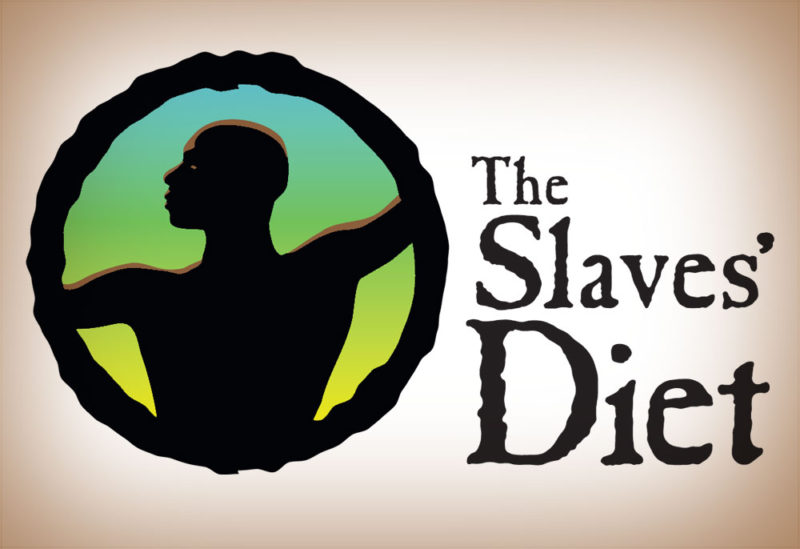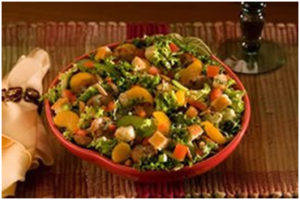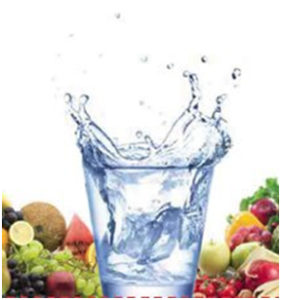
This diet was created and based on the lifestyle of the African-American slaves in colonial America. These healthy Americans lived on 1 meal a day and ate low energy density foods with high water content. Water was the basis of their diet and it’s the basis of this newly created diet. We’ve adapted the actual slaves diet to fit with 21st century Americans, yet we use many of the foods that were available to the slaves in colonial America.
Water is essential to good nutrition and ultimately good health. The human body is 60%-70% waterwhich is a part of every organ in the body. Oxygen is the only other natural ingredient that’s essential to life. Water is needed in every bodily function or process. Combined with blood, it carries important nutrients to all of the body’s cells. Water coats and cushions all the cells and serves as the “Cell Protector.” Water through the form of perspiration is the way the body cools off and maintains a healthy body temperature. Water is a natural lubricant to all parts of the body, and helps the body discard waste naturally.
Water operates very differently than other liquids consumed. Carbonated beverages, coffee and tea all have water as their leading ingredient, yet they function often as diuretics depleting the body of important nutrients. Illustrating the percentage of water making up key body parts can convey the importance of water to the body. The following describes:
|
Perspiration (95%) |
Saliva (94%) |
Lungs (85%) |
|
Liver (83%) |
Blood (83%) |
Kidneys (83%) |
|
Brain Tissue (76%) |
Muscle (75%) |
Heart (73%) |
|
Bones (24%) |
Water supports many bodily functions in unique ways including the following:
Individually, most Americans consumed about 190 gallons of liquids annually in 2015. Pure water represented approximately 43 gallons of this amount. Unfortunately, soda pop and carbonated beverage consumption approached 50 gallons for the same period in 2008 further illustrating how water is substituted by consumers favoring other beverage choices.
Water is closely associated with metabolism, hunger and energy. Approximately three-fourths of Americans are unknowingly chronically dehydrated resulting in the slowing metabolism. An 8 oz. glass of water is usually all you need to eliminate hunger pangs.
Studies also have shown that consuming 5 glasses of water daily decreases the risk of colon cancer by 45% and the incidence of breast cancer by 79%.
Conclusively, it’s safe to say that water is the most important and necessary nutrient that contributes most to good health and a wellness lifestyle. For this reason, The Slaves’ Diet® was created. Water is the carrier of all the other key nutrients to the body. A large percentage of the healthiest food (fruits, vegetables, fish and poultry) is water and these are the very foods that we should consume most. This diet includes foods rich in water content to augment the amount of drinking water consumed.
The Slaves’ Diet® is much more than just a delicious approach to enjoying good food. It’s a pathway to enjoying life! Our approach offers tasty and satisfying food choices combined with adopting a simple daily exercise routine like a 20-minute stroll with a friend. You’ll have fun, look great and feel great too! In Just a few short weeks after you’ve started this wellness journey, you’ll agree The Slaves’ Diet® is the lifestyle change you’ve been looking for.
The goal of The Slaves’ Diet® is to reduce the levels of harmful stored fat in your body while establishing a lifelong pattern of healthy eating and regular exercise. The best way to lose unnecessary weight and permanently keep it off is to consume fewer calories and to burn most of them up by increased exercise causing the body to expend more energy than it takes in. The result is an effective depletion of your body’s fat reserves.
Not only does The Slaves’ Diet® encourage wellness. It celebrates it! Wellness is the key for permanent weight loss. A diet supportive of wellness goals must supply all the nutrients your body needs to stay well. It must contain highly nutritious foods like fresh produce, fresh lean meats including poultry and fish, grains, nuts and other high-fiber foods. Eating an assortment of colorful fresh produce also contain the added benefit of nutrient-rich phytochemicals that have been proven to be effective fighters against the onset of chronic illness including diabetes, heart disease, hypertension and certain cancers.
Simply, The Slaves’ Diet allows you to eat good nutritious food and be satisfied while consuming fewer calories. Foods higher in water content help you feel fuller on fewer calories. The energy density of foods or the ratio to the weight of food determines an individual’s satisfaction. High energy density foods have lots of calories in a small serving size (cookie, candy, etc.…) and are typically lower in water content. A good example of this is raisins (high energy density food) and fresh grapes (low energy density food.) A 100-calorie serving of raisins measure about ¼ cup while a 100 calorie serving of fresh grapes measures 1 2/3 cups. Other low energy density foods are shown in the following chart. Notice that most of these foods are strong nutritionally.
CHART A
Low Energy Density Foods and % of Water Content
| Apples 85% | Apricots 85% | Bananas 76% | Bean Sprouts 92% | Broccoli 91% |
| Cabbage, fresh 92% | Cantaloupe 91% | Carrots Fresh 88% | Olives 80% | Onions 89% |
| Oranges 86% | Papayas, fresh 86% | Peaches 90% | Pears 82% | Peas Fresh 81% |
| Green Bell Peppers 94% | Cauliflower 91% | Celery 94% | Cherries, fresh 80% | Collards, boiled 91% |
| Corn, fresh 74% | Cucumber, raw 96% | Eggs, fresh 74% | Eggplant, raw 92% | Fruit Cocktail 80% |
| Pineapple, fresh 85% | Plum, fresh 87% | Potatoes, fresh 85% | Pumpkin 90% | Dill Pickles 98% |
| Radishes, fresh 95% | Raspberries 81% | Rutabagas, boiled 90% | Spinach, fresh 92% | Squash, boiled 96% |
| Grapes 82% | Kale 87% | Lettuce, Iceberg 96% | Okra, boiled 91% | Grapefruit, fresh 88% |
| Strawberries 90% | Sweet Potatoes, boiled 71% | Swiss chard 94% | Tomatoes, fresh 93% | Turkey, roasted 62% |
| Watermelon 93% | Watercress, fresh 90% |

The Slave’ Diet has 5 key parts – over these next 5 articles you will learn how to improve your diet by eating similarly to the slaves. They were able to work long hours in the fields due to there high quality diet.
Now presenting step number one.

Gone are the days that a good salad recipe consists only of iceberg lettuce, red tomatoes and Thousand Island dressing. There are literally thousands of salad recipes that include veggies, fruits, grains, nuts, cheeses, and meats. Salad dressings have changed too. The freshest, most delectable dressings are made from ingredients you probably have right around your kitchen. A delicious and fresh Navel Orange Vinaigrette dressing can be made in minutes with 4 simple items that are at our fingertips. All you need in creating delicious, flavorful salads and salad dressings is your imagination, and if you need a little help go to www.unclewileys.com for a variety of salad recipe options.
Preparing and enjoying a daily salad is critical to the success of The The Slaves’ Diet®. The National Institutes of Health (NIH) and the Food and Drug Administration (FDA) recommend that for optimal health adults should consume 9-12 servings of produce and children should have 7-9 servings daily. At first glance, you might be wondering how anyone could possibly consume that much produce everyday. Well, it really isn’t as much food as you might think. The following USDA guidelines describe a serving size of produce:
Before going any further, you must think differently about salads. Don’t limit salads to a tasteless appetizer served before a meal. Let Salad Make The Meal! Salad can be served at every meal occasion. There are great recipes for appetizer salads, side salads, entrée salads, breakfast salads, snack salads and even dessert salads. An entrée salad for lunch or dinner is an easy way to get 6 or more serving of produce in one meal occasion. You’re more than half way in securing your goal of 9-12 servings of produce, and you haven’t overeaten.

Most people don’t give much thought to side dishes. We usually refer to the type of meal we’re looking forward to enjoying by the name of the meat. A lobster dinner, a fish fry, a spaghetti supper, a burger bash are common phrases used to describe a meal. You hardly ever hear a meal described by the side dish. I’m convinced that because side dishes are most often after thoughts relative to the meat offered so are the preparation of them.
For example, think about potato side dishes. Potatoes are a naturally fat free food; however the classic mashed potato recipe includes butter and milk. Both ingredients are loaded with fat and cholesterol. French fries, the #1 consumed side dish (22%) in America (22%) are also made from potatoes, yet they are deep fried in high fat oils and usually sprinkled with salt. Other vegetables are treated similarly. Green vegetables like broccoli and asparagus are often prepared in high fat and high caloric cream sauces that negate the benefits offered from the vegetable. Southern style side dish recipes that are created from leafy greens, fresh beans, corn, sweet potatoes and squash often use bacon dripping, butter, pork fat and animal skin as the seasoning for many popular everyday dishes.
One thing is for certain. Americans crave flavor and aren’t willing to sacrifice it even if it means carrying excess body weight. The Wiley’s® seasonings and spice line was created to address this very issue. This line captures the flavors and the tastes of home-style foods without adding fat or cholesterol. The Slaves’ Diet® evolved from the success of the line. The line is available in produce departments of select retailers or at www.unclewileys.com.

Your body must have its daily supply of complete protein to stay healthy and well. There are more than 50,000 different proteins in our body. Protein is the nutrient most responsible for cell growth and cell repair. The natural hormone insulin and enzymes that promote good digestion and good metabolism are all protein components. Our bodies are constantly building and rebuilding protein. Of the 20 different amino acids that our body requires, the 9 essential amino acids are found only in animal protein (meats, fish and poultry) and soy. The remaining 11 amino acids our bodies make naturally
Fruits and vegetables also contain protein generating amino acids, yet no produce item alone contain the 9 essential amino acids found only in animal protein and soy. For this reason, plant protein unlike animal protein, which is a complete protein, must be combined with other complimentary proteins to become complete.
Most of us when planning a meal start with the protein first evidenced by the way we reference meals (i.e., steak dinner, spaghetti summer, clam bake, burger bash). Ideally, no more than 12 percent of daily caloric intake should come from protein sources, however; for most Americans, meat is in excess of 40% of the daily caloric intake. Of all the key food groups, most people agree that eating protein is most satisfying. For this reason, it’s a good idea to add protein to every meal so that you feel full throughout the day. Careful though, don’t over do it on too much protein. 4 -6 oz. of protein daily is enough. Consuming at levels higher than this recommended intake could spur big health concerns. Meats, especially pork and beef should be eaten in moderation because both are high in cholesterol and saturated fat.
The Slaves’ Diet® recommends that you consume no more than 2 oz. of lean protein at each main meal occasion (breakfast, lunch, dinner). The best ways to prepare lean protein without adding additional, fat or cholesterol is via grilling, baking, broiling or boiling. Avoid frying at all cost. The importance of lean protein consumed cannot be minimized. The Slaves’ Diet® strongly encourages consuming more fish and poultry versus beef and pork. The following key information about the 4 major animal protein sources provides you with the pros and cons of each:
POULTRY: Chicken and turkey are the most popular poultry products. Higher in protein and lower in saturated fat than red meat on an equalized per serving basis. Always remove all the skin from poultry prior to cooking and you will remove the largest source of animal fat. Turkey is actually lower in fat and calories than chicken. Nutritionally, there isn’t much difference nutritionally in dark versus white meat poultry. Poultry products are a good source of Vitamin A, Vitamin B and minerals
BEEF: Fresh beef can be prepared a number of different ways. A 4-ounce serving provides 100% of the RDA of Vitamin B12 and respectable levels of niacin, iron, zinc, and Vitamin B6. Beef, despite its great taste and popularity is a leading carrier of cholesterol. When possible always trim any excessive fat. Americans consume on average 55 lbs. of beef annually.
PORK: Pork has the highest percentage of fat and cholesterol when compared to other meats. Cured pork like bacon, smoked pork chops and ham is high in sodium and should be avoided. Consume no more than 2 oz. of pork at any time.
FISH: The Slaves’ Diet ® supports eating more fish and less meat. Americans’ consumption of fresh fish averages 16 lbs. per capita annually compared to more than 150 lbs. of red meat and more than 100 lbs. of poultry. Fish has more protein, less fat, fewer calories than other meats on a per serving basis. Omega-3 fatty acids are a substance found in fish oil and have been proven to increase the level of HDL cholesterol (good cholesterol that helps prevent heart disease) and aids in keeping blood platelets stable thereby, minimizing blood clots.

If you want a healthy lifestyle you must get daily exercise. Exercise, regardless of its intensity will do amazing things for your mind, body and spirit. The Slaves’ Diet ® recommends an exercise regimen that includes at least 20 minutes of exercise daily. If exercise is new to you, start slowly by walking 10 minutes daily increasing your pace everyday. Within the first week you will feel more energetic. Daily exercise is an important factor towards wellness success. The following are some key benefits of daily exercise:
The only way to lose weight or maintain a healthy weight is to consume a healthy low fat diet with daily aerobic exercise. Whether it’s walking, jogging, cycling or swimming, get yourself moving. Aerobic exercise isexcellent. Elevating your heart rate and breathing strongly will help you burn fat! Make an appointment with your self to do physical exercise. Remember to schedule time everyday for 20-45 minutes of daily physical exercise. Exercise of any type is great when you share it with a partner. Find yourself a partner that will motivate you to exercise daily.

Be certain to select a physical activity that you will enjoy. You might want to jog one day with a friend, and swim the next. Whatever you decide, keeps it interesting. Check your local YMCA or neighborhood gym for a schedule of fitness classes offered. You might want to workout one day inside and workout the following day outside. Regardless of your preference, include exercise into your schedule.
If you’re just beginning to exercise, don’t over exert yourself. Build up slowly. Start out with a friend doing 10-15 minutes sessions of low to moderately paced exercise. Don’t push yourself and don’t start out alone. Your body will let you know if you’re doing too much. Listen to it!

It’s not necessary to stick to only one exercise type. You can certainly be flexible. Consider option beyond walking and running like playing tennis, pick-up basketball, and yoga and dancing. Regardless of what you decide. KEEP MOVING!

Water is absolutely needed and primarily essential for every body function to perform well. A healthy adult should strive to drink 8 or more 8 oz. glasses daily. Just about every type of food has water as a key ingredient.The Slaves’ Diet ® suggests foods that are water-rich. The water content of fresh produce in Steps #1 and Steps #2 averages 80 percent. The water content from the sources of Lean Protein in Step #3 average 50 percent.
You might be thinking that you will never drink 8 glasses of water in day. Don’t be surprised, but some people actually consume more. Needs vary given the temperature outside and the level of physical activity. WE drink more during the summer compared to the winter. Our bodies use water when involved in physical activity (Step #4). Generally speaking, the amount of water consumed daily should be greater than or equal to the level of the body’s natural excretions (perspiration, urine, etc.).
Don’t worry, if you drink more water than your body needs, your kidneys discards the excess through urination. The following chart shows the water content of many of the foods suggested in The Slaves’ Diet ®.
Water Content of Foods Recommended by The Slaves’ Diet
| Recommended Food | Food Type | Water Content |
|---|---|---|
| Step 1: A Salad everyday | Fresh Produce | Fresh Fruits (80%), Fresh Vegetables (90%), Dried Fruits (30%) |
| Step 2:Seasoned Side Dishes | Fresh Produce | elected Vegetables Leafy Greens (90%), Tomatoes (93%), Baked Potatoes (71%) |
| Step 3: Lean Protein | Fish and Shellfish | Salmon, Shrimp, Haddock, Sole, and Cod (75%), Oysters (85%) |
| Meat & Poultry | Well Done Meats (45%), Rare Meats (65%), Deli Meats (55% |